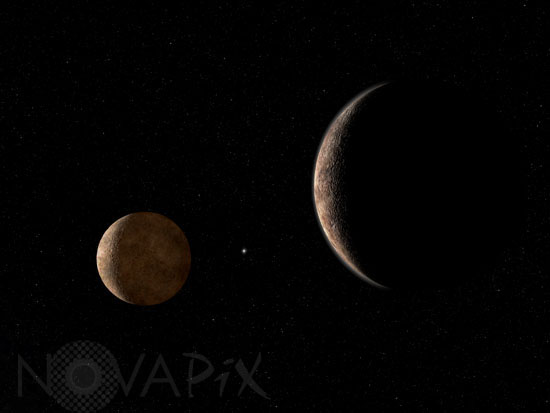Photo Agency - Astronomy - Space - Nature

Pluto and Charon - Artist view
author: Walter B. Myers/Novapix
reference: a-plu99-00027
Image Size 300 DPI: 42 * 31 cm
This rendering suggests how Pluto, on the right, might appear from a position high above its equator. Beyond Pluto and to the left is Pluto's largest satellite Charon. Charon's dark, "anti-sun" side is softly illuminated by sunlight reflecting off of Pluto's surface. This rendering also illustrates Pluto's steep rotational inclination to the ecliptic: the bright star between Pluto and Charon is Polaris, the "north star," which lies directly over the Earth's north pole. The dwarf planet Pluto was discovered in 1930 by the American astronomer Clyde Tombaugh during a systematic search for a planet that was predicted to lie beyond Neptune. As it turned out, the calculations that led to Pluto's prediction were wrong, but Tombaugh happened upon Pluto anyway. Pluto's satellite Charon was discovered in 1978, and in 2005 two additional--and diminutive--satellites, Nix and Hydra, were discovered with the Hubble Space Telescope. Pluto is probably made up of 70% rock and 30% water ice, much like Neptune's satellite Triton. Pluto's surface is believed to be host to frozen nitrogen, carbon monoxide and methane.
Contact : Stéphane Aubin +33-(0)9-51-26-53-76
© Novapix - All rights reserved


